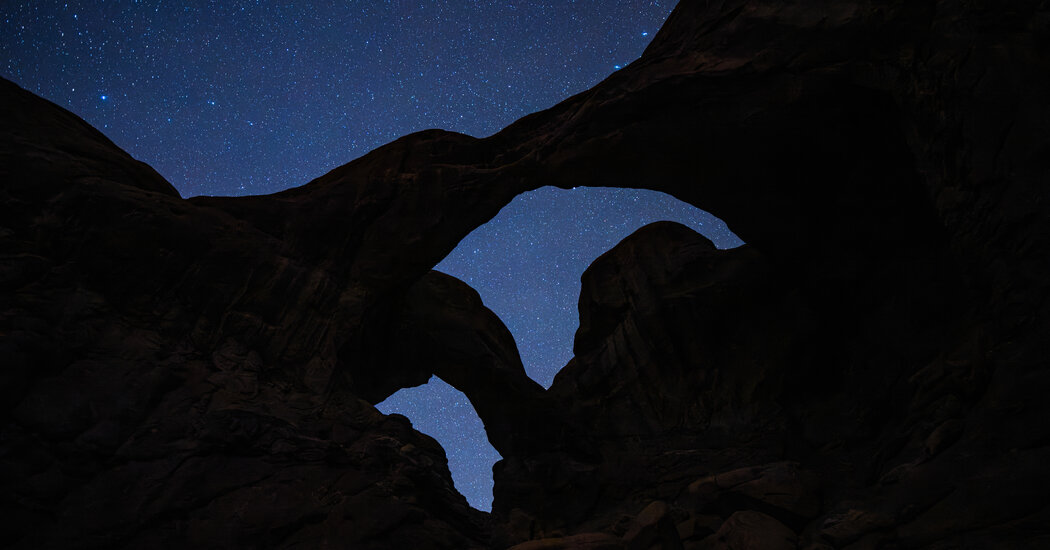

Beneath a waning moon
In planning my trip to Utah, I took some advice from Ms. Foott and scheduled my trip as close as I could to the new moon, when the sky is darkest.
“Light from the moon may seem dim, but it can dramatically alter the nighttime scene,” Ms. Foott said. “A new moon is the best time to see faint celestial objects that can be washed-out by moonlight like the Milky Way and faint stars. This can also be achieved when the moon has set, or when the moon is only partially illuminated.”
On the morning of Oct. 4 — as the moon was waning — I deplaned at Salt Lake City International Airport, and headed by car to the town of Moab, about 230 miles southeast and the gateway to Canyonlands and Arches, two of Utah’s “Mighty Five” national parks, which also include Bryce Canyon, Capitol Reef and Zion.
In my tiny Ford Fiesta with all the windows down, I got my first glimpse of Utah’s often-photographed sandstone formations, spires, buttes and hoodoos (or earth pyramids) as well as the undulating canyons and natural bridges that make the state so geographically vivid. With only a few days away from caring for an elderly parent, I was constrained for time, so I needed to bypass another nearby hub for stargazers, Canyonlands National Park, and concentrate solely on Arches, where I planned to meet up with an old friend, Thom Harrop, a Utah native and photographer.
After hours of driving, and a little grubby, I pulled into the former mining town of Moab, which acts as a base camp for tourists, rock climbers, mountain bikers, hikers and stargazers. A range of restaurants in Moab caters to a variety of tastes while a growing number of hotels serves the needs of those who want to kick about the sandstone and then sleep in crisp sheets, a demographic in which I squarely fall.
While still back home in Tennessee, I heard that a long-utilized ad hoc stargazing site at Arches called Panorama Point had recently been upgraded. Joette Langianese, the executive director of the Friends of Arches and Canyonlands Parks, the nonprofit organization that was critical in getting the dark-skies designation for both parks, confirmed that they had built an outdoor sky-viewing space with telescope pads and seating for 75 people.
“Lately, people are going there with their own telescopes, and sometimes a ranger will just come out and talk to them,” Ms. Langianese said. “Both Canyonlands and Arches have scheduled night sky programs, but, because of Covid, they were canceled, so they’ve been happening sort of automatically.”



